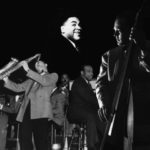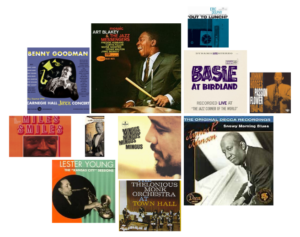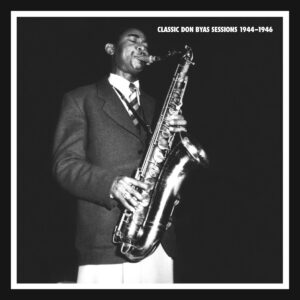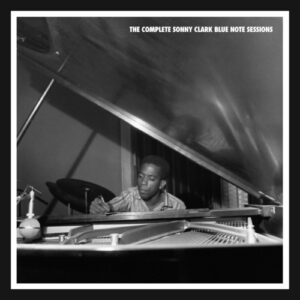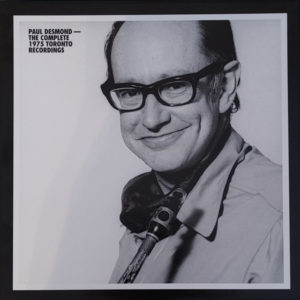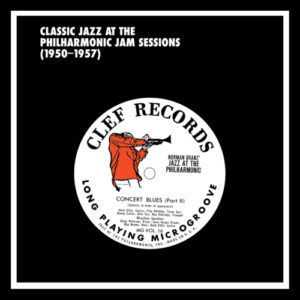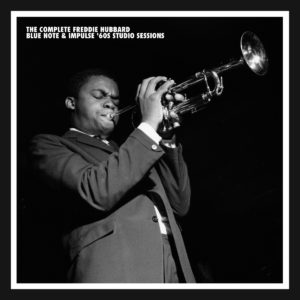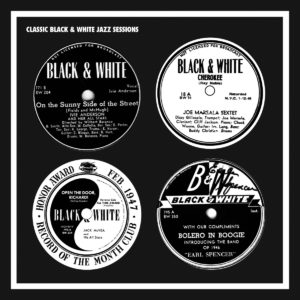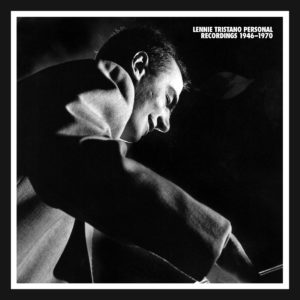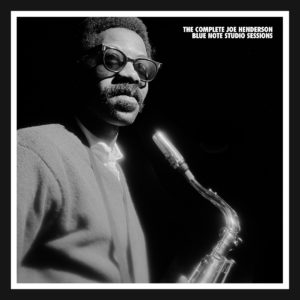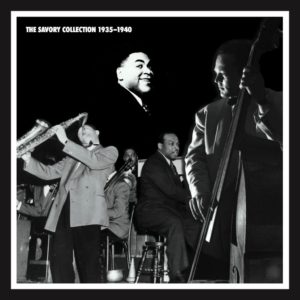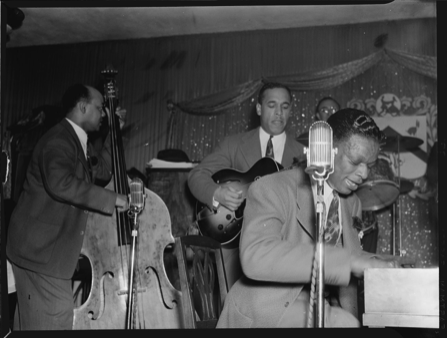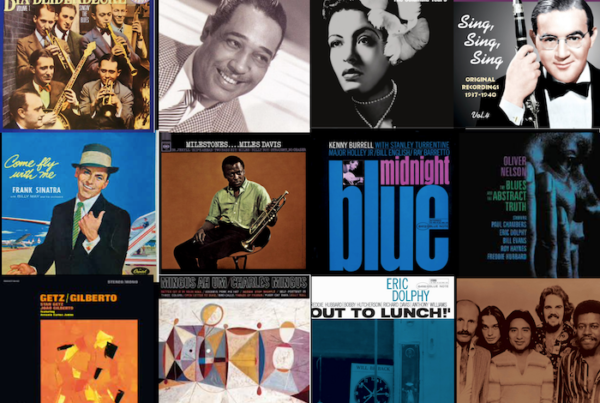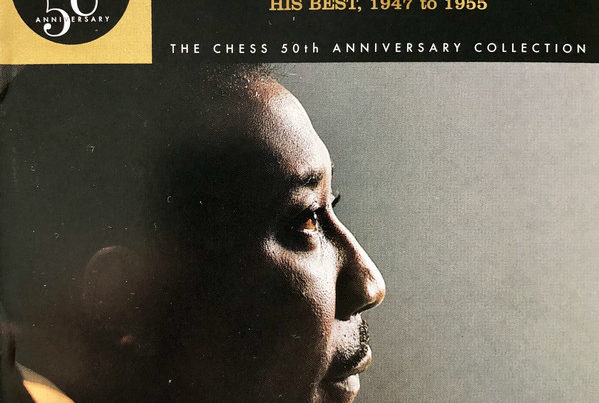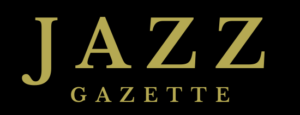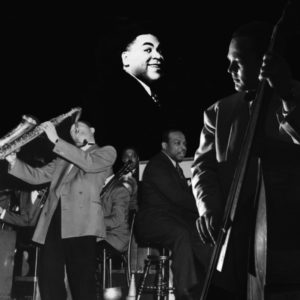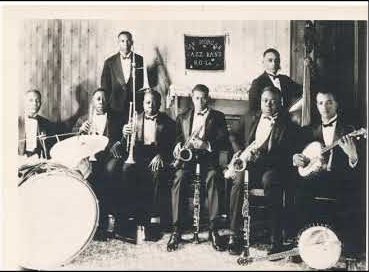
1920s Jazz
Jazz Artists
New Orleans
New York
Europe
At the very dawn of jazz recording, with echoes of the Original Dixieland Jazz Band still in the air, very few jazz artists in the 1920s were able to capture a fresh new sound until the flood gates opened with the blossoming of Louis Armstrong. It was the powerful virtuosic display of Louis Armstrong that made the Roaring 1920s the era of “hot jazz”.
1920s Jazz Artists
Louis Armstrong & Sidney Bechet
In boxing Muhammad Ali had Joe Frazier. jazz of the 1920s Louis Armstrong had Sidney Bechet. Like Armstrong, Bechet was from New Orleans but was four years older, conquered Europe when Armstrong was still at home. In late 1924 and in 1925, they teamed up to record two separate versions of “Cake Walking Babies from Home.”
On the first one, the supremely confident Bechet overwhelmed Louis Armstrong. On the remake, heard here, Bechet seized the spotlight until the 2:12 mark when Louis Armstrong hits an angry note, asserting his presence. Armstrong then unleashes with an endless torrent of fiery playing, including a pair of dazzling, mind-bending breaks. Louis Armstrong was just beginning his ascent as jazz’s greatest genius.
James P. Johnson
Duke Ellington, Count Basie, Earl Hines, Art Tatum, Willie “The Lion” Smith and , of course, Fats Waller, knew about James P. Johnson, regarding him not only as their musical father but also as the greatest pianist in jazz. Later, even modernists like Thelonious Monk and Bud Powell would recognize his influence.
Duke Ellington
“East St. Louis Toodle-O” an epitome of much that was to come in his music, but the 1926 recording is so well played as to indicate that Duke Ellington and the Washingtonians must have been performing the piece regularly. According to Sonny Greer, it was one of the band’s signature numbers: “People heard it and said, ‘Here they come!’” Ellington, who always knew a good thing when he heard it, responded by making “East St. Louis Toodle-O” his radio theme, playing it nightly for years to come.
1920s Jazz: New Orleans
Traditional New Orleans jazz has always been a mystery to some and a revelation to others. Even at home, the range of opinion has traditionally fluctuated wildly from animosity to diffidence to chauvinism. Thus, on June 20, 1918 the New Orleans Times-Picayune ran an editorial titled “Jass and Jassism” that condemned the new music in no uncertain terms, urging the local population “to be the last to accept the atrocity in polite society” and to “make it a point of civic honor to suppress it.”
Letters to the editor over the next two weeks made it clear that many Orleanians were willing to defend jazz at this early date as “the typical American music–the true music of the hustler” or merely as “a style of playing” and resented being dictated to by “an ignoramus.”
Advertisements by Maison Blanche for the first jazz recordings in 1917 had already established the middle ground on the issue, that jazz was, simply, New Orleans dance music: “Here is positively the greatest dance record ever issued. Made by New Orleans musicians for New Orleans people, it has all the ‘swing’ and ‘pep’ and ‘spirit’ that is so characteristic of the bands whose names are a by-word at New Orleans dances.”
Long after homegrown artists in the 1920s such as Jelly Roll Morton, Sidney Bechet, King Oliver, Edward Ory, or Louis Armstrong had hit the road in search of greener pastures, revolutionizing American popular music in the process, generations of dancers back in New Orleans continued to respond to jazz less as an art form and more as a necessary part of the fabric of daily life–a functional music for parades, fish fries and banquettes, church openings, Carnival and debutante balls, taxi dance halls, ball games, and funerals.
Music did not “dry up” in New Orleans after the departure of Louis Armstrong in 1922 (as is often presumed) but instead continued to develop and evolve within its indigenous cultural context.
Thus, while New Orleans superstars apotheosized the New Orleans style in 1920’s jazz recordings made in Chicago and New York-what most “hot” collectors referred to when they talked about authentic jazz of the 1920s-many of the elements which were essential to the homegrown variant remained invisible to the national jazz constituency of the period.
In particular, the city’s unique brass band heritage, replete with its “second line,” and the Creole dance hall repertoire were left behind, presumably because record company officials saw no commercial potential in these genres at the time. Then, as now, New Orleans artists were forced by market imperatives to adapt to mainstream tastes rather than to expect most Americans to understand or appreciate New Orleans music on its own terms. It was simply too quirky.
In New Orleans dance halls, however, the quirks reigned supreme and infiltrated even the upper echelons of society in the period 1915-1925, working from the bottom up. Teenagers who caught Kid Ory’s Creole Band or Armand Piron at subscription dances at the Tulane University Gymnasium in the prewar years were easily hooked and relied on similar outfits as young adults for their social functions throughout the 1920’s.
Jelly Roll Morton’s Red Hot Peppers
Original Jelly Roll Blues (1926)
Meanwhile, the music of the brass bands and Creole songs remained a world apart, apparent in the community life of the city’s less affluent neighborhoods–the Treme, Seventh, Eighth and Ninth Wards, and Central City–but it was always a staple at Carnival time, available to every level of society and to all ages as they flooded onto the streets in the weeks preceding Mardi Gras.
The insularity of New Orleans culture did not protect it from the media-driven forces which were transforming the entertainment industry in the years just before the Great Depression, however. By 1927, artists in the 1920s such as Oscar Celestin’s Original Tuxedo Jazz Orchestra had grown from eight to fourteen pieces and had acquired an arranger from St. Louis, Cecil Thornton, to update the band’s book.
1920’s music included dance bands such as the New Orleans Owls routinely listened to radio broadcasts from the northeast to keep abreast of current fashions. Agents of the recording industry, especially Columbia officials, insisted that local bands include their song plugger’s specialty items in recording sessions, disregarding a band’s working repertoire almost completely in some cases.
Booming markets for phonographs, and then radio, reinforced national cultural imperatives at the expense of regional distinctiveness and proffered mechanical music as an alternative to live performance. Jazz of the 1920s gave way to the popularity of “sweet” music in 1930 and the trend toward larger orchestras were beginning to marginalize New Orleans artists at home and abroad, evident in Jelly Roll Morton’s fall from the RCA Victor roster and the complete lack of jazz recordings made in the Crescent City after the Jones & Collins Astoria Hot Eight sides of November 1929.
The Depression years were most unkind to New Orleans musicians, and competition to get on board the Emergency Relief Administration and Works Progress Administration band rolls was fierce. Meanwhile, the filling in of the lake-front area around Milneburg had a serious impact on the opportunities available to musicians, removing forever the thriving camp scene that had nourished the emergence of jazz earlier in the century.
Some veterans complain that the new brass bands ignore the tradition and that the subtleties of collective improvisation are being lost. It is true that once the torch is passed, one cannot tell the younger generation what to do with it. This music brings a little bit of New Orleans into what are probably rather hectic and fast-paced lives, reminding us how important it is to occasionally relax, slow down, and feel some music. Meanwhile, for those who are so inclined, that ferry boat still goes to New Orleans. – Bruce Boyd Raeburn, Ph.D., Curator Hogan Jazz Archive, Tulane University, liner note excerpt The Atlantic New Orleans Sessions (Mosaic Records)
1920s Jazz: New York City
New York City, particularly the borough of Manhattan, has served as the focus for jazz’s maturity and evolution from the jazz of the 1920s to the present. But it never quite carried the mythological resonance of places that enjoyed intense associations with specific eras in jazz.
The parishes of New Orleans sparked the first great fomenting of jazz artists in the 1920s; then Chicago proved to be the primary magnet that drew Southern musicians to the North. The wide-open nightlife of Kansas City would inspire countless musicians in the 1930s ( including Lester Young and Count Basie), and the laid-back temper of Los Angeles would take up the “cool” style of the 1950s. In the end, however, no matter where they came from, no matter how much local renown they achieved, nearly all the great jazz musicians had to make their way to New York to cement a genuine, enduring success.
New York City
Between 1895 and 1925
Colorized, speed-corrected and A.I. enhanced footage
New York’s centrality may be explained in part by cultural inertia, as each generation of its musicians lured the next. Yet as we look more closely at the development of jazz in New York, especially in the early years, we find three interlocking spheres of influence: commercial, sociological, and musical.
The country’s entertainment infrastructure—concert halls, theaters, museums, galleries, radio and television, newspapers and magazines, book publishers, and record labels, not to mention managers, agents, bookers, and publicists—took root in New York in the closing years of the nineteenth century and never left. New York media spoke for the nation, and as jazz became a commercial entity, it needed access to that media and to the stimulating atmosphere forged by a powerful industry designed to match performers with audiences.
The Great Migration
The years of the Great Migration from South to North coincided with massive East-to-West emigration from Europe to the United States. Jazz is unusual as an art form in that a majority of its performers belong to ethnic minorities.
Most of the major figures in jazz history who were not African American derived from immigrant families that originated in Italy, Ireland, Germany, and Russia. Middle European Jews, whose music involved a blues-like use of the pentatonic scale and a feel for improvisation, were especially drawn to jazz.
This confluence of ethnicities proved particularly profound in New York, which in the 1920s accounted for America’s largest urban communities of blacks and Jews. An alliance between black musicians and Jewish songwriters replicated, in part, the give-and-take between New Orleans blacks and Creoles, and helped to define jazz for three decades.
It is often said that in encompassing all of jazz, New York produced no specific style of its own. This isn’t entirely true. Stride piano (James P. Johnson) originated on the Eastern Seaboard and flowered in New York in the 1920s and 1930s; New York’s receptivity then advanced the innovations of modern jazz (or bebop) in the 1940s and avant-garde (or free) jazz in the 1950s and 1960s.
Louis Armstrong
Ain’t Misbehavin’ (1929)
The city’s most significant contribution to jazz, though, was the development of large bands and orchestrations: the influx of jazz artists in the 1920s from New Orleans (Louis Armstrong), Chicago, and elsewhere overlapped with the growing enthusiasm for ballroom dancing, generating a demand for elegant orchestras, These were jazz’s first important big bands, and some of them would later fuel the Swing Era.
Small wonder that when a young, untested, and unknown Duke Ellington arrived in New York for the first time in 1923 and surveyed the bright lights that extended from one end of Manhattan to the other, he exclaimed, “Why, it is just like the Arabian Nights!” The possibilities were limitless and the soundtrack was jazz—or soon would be. – Gary Giddins & Scott DeVaux excerpt from “Jazz” (click to purchase); reprint with permission
1920s Jazz: Europe
By Scott Yanow
In 1910 jazz only existed in the southern part of the United States, most notably in New Orleans. In 1915 it was starting to work its way north to Chicago and to the west coast, but it would still be two years before it appeared on record. And yet by 1920, jazz had not only been named but it was being heard in England and on the European continent.
The Original Dixieland Jazz Band, the first musicians to ever record jazz, arrived in England in 1919 and were a sensation with much of the general public if not necessarily the press.
By the time the ODJB returned to the U.S. in 1920, other American artists in the 1920s were starting to make an impact in Europe. Will Marion Cook’s Southern Syncopated Orchestra made it to England by June 1919. Although the huge ensemble primarily played folk music and classical works, it included a young clarinetist by the name of Sidney Bechet who amazed and confounded audiences by preferring not to read music and instead made up his solos as he went along. A key figure of 1920s jazz.
Swiss conductor Ernest Ansermet wrote the first significant review of a jazz artist which read in part: “There is in the Southern Syncopated Orchestra an extraordinary clarinet virtuoso who is, so it seems, the first of his race to have composed perfectly formed blues on the clarinet. Extremely difficult, they are equally admirable for their richness of invention, force of accent, and daring in novelty and the unexpected. Already, they gave the idea of a style and their form was gripping.”
Sidney Bechet returned to Europe in 1925, performing all over the continent including France, England, Germany and the Soviet Union. Decades later in 1949 he permanently moved back to France where he would be considered a national hero even while the average American did not know his name.
A Day in 1920’s Paris
The most important American jazz band of the 1920s in Europe was the one led by Sam Wooding. The pianist-arranger brought his orchestra to Europe in 1925 to play in the Chocolate Kiddies revue. Although originally considered a supportive act, Wooding and his soloists stole the show when they opened in Germany and were soon considered the revue’s stars.
In the audience during one of their early shows was a teenager named Alfred Lion who was just discovering jazz and who in 1939 would form Blue Note Records, hoping to record music as exciting as Wooding’s. While Paul Whiteman’s orchestra had toured Europe in 1923, Wooding’s band was hotter, traveled more widely and was much more influential. It helped to introduce jazz not only all over Europe and Russia but to Turkey, Egypt and Argentina as well.
As jazz in the 1920s progressed, more and more American players made visits to Europe including pianist Claude Hopkins in 1925, Noble Sissle’s Orchestra in 1928, violinist Eddie South (who infused his music with the influence of European gypsy folk melodies), drummer Dave Tough, tenor saxophonist Bud Freeman, bass saxophonist Adrian Rollini and clarinetist Danny Polo.
Louis Armstrong today is still the most famous jazz musician in the world as he was in 1932 when he first visited Europe. Oddly enough he arrived in England without a band, taking along just his trumpet, a few arrangements, his manager and his soon-to-be third wife Alpha. His first visit to England was not met with unanimous acclaim, partly because his pickup band was under rehearsed. Also, his jazz fans in the audience were used to Armstrong’s three-minute records and not his hyper and often-grandstanding show of the period.
Armstrong returned to Europe in August, 1933 and stayed overseas for two years, mostly taking it easy and recovering from a bad lip but touring Scandinavia, England and France. Most American jazz trumpeters had been influenced by Armstrong since at least 1927 and his appearances in Europe resulted in a similar situation by the early ’30s with many trumpeters emulating him, including Nat Gonella, probably the top British soloist of the 1930’s.
Duke Ellington made his first visit to Europe in June 1933 and his first performances also did not initially live up to the expectations of some in the press who were familiar with his “jungle music” and did not care for his newer and less “serious” arrangements. However, once Duke realized that he did not have to play current pop tunes to win over his audience, switched his repertoire to his more adventurous works.
He won over virtually everyone, including Spike Hughes who wrote in the Daily Herald: “A prophet without honour in his own country. It has remained for us to discover, if not at first hand, at least through the medium of the gramophone, that Duke is something more than a bandleader specializing in what are vaguely called ‘voodoo harmonies’ and ‘jungle rhythms.’ He is in fact the first genuine jazz composer.”
England’s musician unions would largely close the door to American and other foreign jazz musicians by 1935, but jazz artists continued visiting Europe until the beginning of World War II, including Coleman Hawkins, Benny Carter and trumpeter Bill Coleman, all of whom had long stays overseas. They and most other Americans visiting the Continent were interested in playing with one European in particular: Django Reinhardt.
A barely literate gypsy born in Belgium and based in France, Django Reinhardt had discovered the 1920’s jazz recordings of Louis Armstrong, Joe Venuti and Eddie Lang. By 1934, when he started teaming with violinist Stephane Grappelli, Django Reinhardt was far ahead of any other jazz-based guitarist in the world.
Although the guitarist was not the first European jazz artist and there were several others of high quality (including Grappelli, the Hawkins-inspired tenor of Alix Combelle and altoist Andre Ekyan), Reinhardt was the first true jazz giant who was from outside the United States. He was also the first European jazz musician who Americans learned from.
Django Reinhardt’s rise to prominence was proof that jazz had finally become an international music with no territorial barriers, and he set the stage for the many top European jazz musicians who have since invigorated jazz.- Scott Yanow – Mosaic Records Brochure #28

